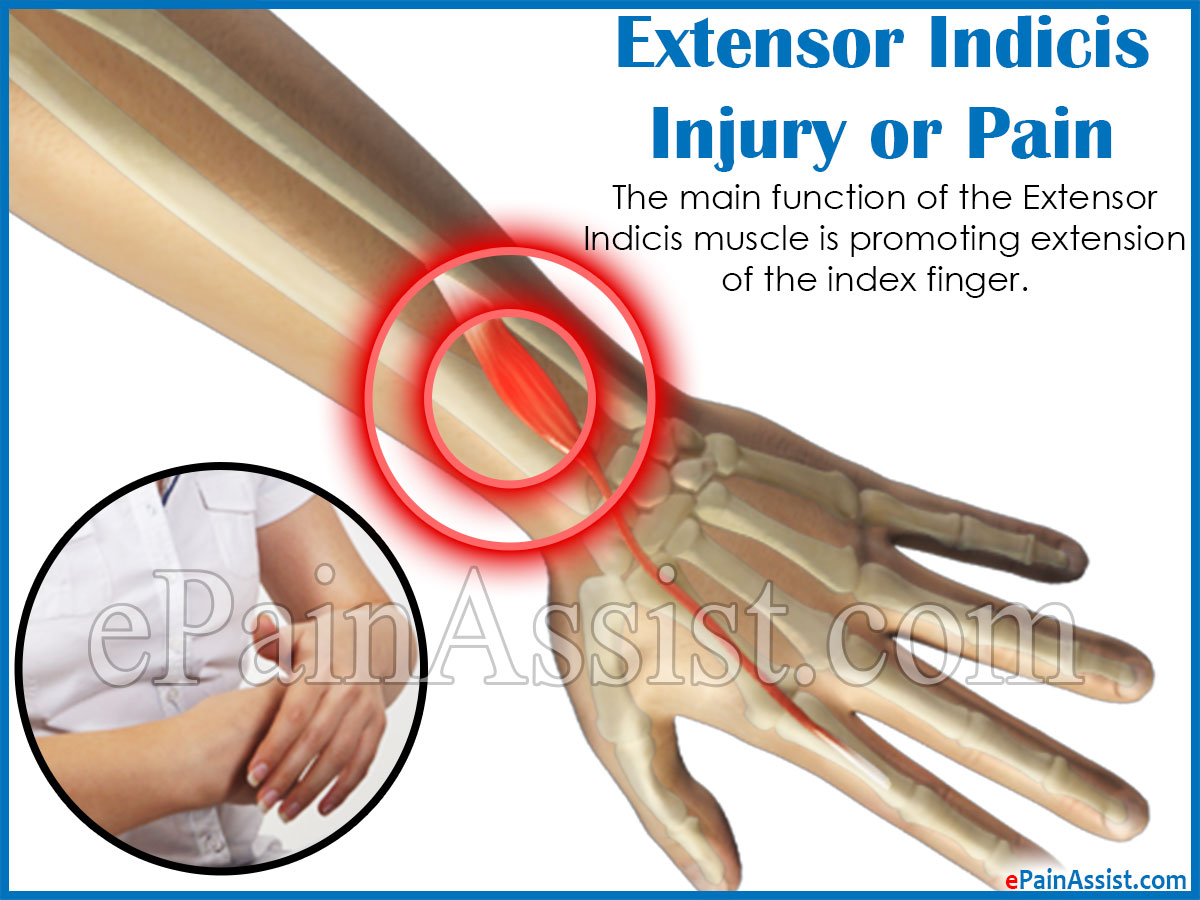What is Extensor Indicis and What is its Function?[1]
The Extensor Indicis muscle stems from the back of the ulna immediately underneath the Extensor Pollicis Longus muscle. Just near it is the interosseous membrane. The main function of the Extensor Indicis muscle is promoting extension of the index finger. Additionally, this muscle also helps in extension of midcarpal joints and wrist. This muscle is quite long and thin and is present in the forearm. The tendons of Extensor Indicis muscle facilitate extension of the various phalanges of the index finger. The Extensor Digitorum muscle traverses just parallel to the Extensor Indicis muscle.

Signs and Symptoms of Extensor Indicis Injury or Pain[2]
Some of the signs and symptoms suggesting an injured extensor indicis muscle are:
- Severe pain at the back of the hand
- Pain behind the wrist
- The pain may at times radiate down to the first finger
- Pain with bending motion of the finger
- Cramping of first finger
- Pain in the fingers and wrist with gripping objects.
What Can Cause Extensor Indicis Injury or Pain?[3]
Some of the activities that can indicate or cause extensor indicis injury or pain are:
- Activities which require repetitive gripping
- People spending abundant time in front of the computer typing and using the mouse can also injure the Extensor Indicis muscle
- People involved with knitting and crocheting are more prone to Extensor Indicis injury and pain.
Risk Factors of Extensor Indicis Injury or Pain
Some of the medical conditions that can be caused by an injured extensor indicis muscle are:
- Carpal Tunnel Syndrome
- C7-C8 radiculopathy
- Recurrent finger dislocations.
What is the Treatment for Extensor Indicis Injury and Pain?[4]
Cold Therapy Treatment for Extensor Indicis Injury or Pain: For treating an injured Extensor Indicis Muscle using cold therapy is the most effective treatment. Cold therapy gel has been shown to be quite useful in relieving pain and discomfort caused due to a Extensor Indicis Injury. This gel tends to cool the inflamed area quickly and prevents development of swelling due to the cooling effect. To use the gel, gently rub it at the injured side both at the front and back starting just at the elbow going down all the way to the tip of the thumb.
Wrist Ice Wrap to Treat Extensor Indicis Injury or Pain: When an individual has an injured Extensor Indicis Muscle then just treating the thumb pain is not sufficient but the whole muscle needs to be treated. For this the Ice Wrist Wrap has been shown to be quite beneficial, as it covers the entire muscle and provides compression and helps in healing of the muscle. To begin with, you can start wearing the wrap for about 20 minutes and then gradually increase the time. You can also adjust the wrap so as to cover the thumb as well. Also helpful can be using a frozen wash rag wrapped around the thumb along with using the wrap as this combination will completely cover the muscle and allow it to heal faster. Additionally, Biofreeze gel can also be applied along with using the wrap for additional comfort.
Warm Therapy Treatment for Extensor Indicis Injury or Pain: There are a lot of heat therapy or warm therapy gels readily available in the market which can be used to treat extensor indicis injury or pain. Such gels provide required warmth to the muscle which expedites healing process. Arthritis patients can use such gels for instant pain relief. The gel can be applied on the inside part of the elbow and the wrist region several times a day for maximum benefit.
Arm Compression Sleeves: These have also been shown to be quite effective in relieving pain and discomfort caused due to an injury to the Extensor Indicis Muscle. These sleeves provide more support to the muscle and prevent it from any reinjury and also help in recovery. It is mostly used by people who have significant pain affecting their activities of daily living and athletes along with people who use tools quite often in their work.
